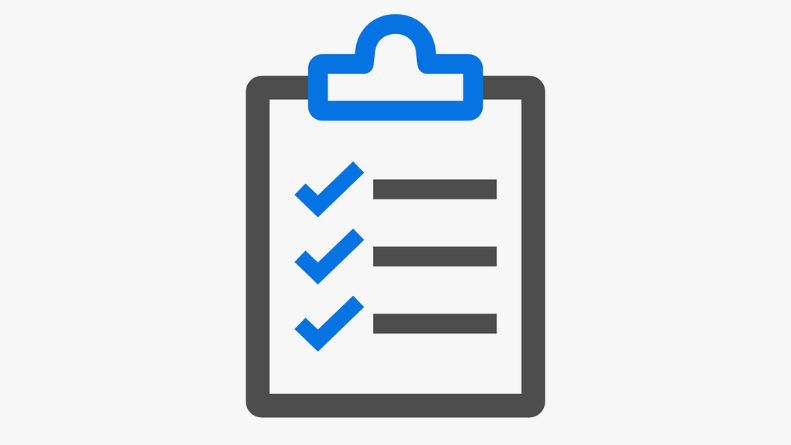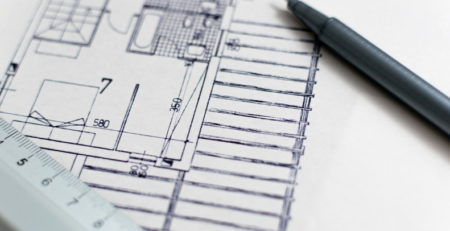Things to Know Before Investing in Buy-to-Let
Investing in buy-to-let rental property can be challenging, especially if you’re just getting started with your real estate journey. This is the right article if you’re looking to acquire your first rental property. Find out below what you need to know before you buy a property and rent it out.
One of the most common ways to invest in real estate in the UK is through the purchase of buy-to-let rental properties. It’s a great method to earn a steady income stream, but it may be a thorn in your side if not done with foreknowledge and planning.
When it comes to investing, many people are afraid to get started because they don’t know where to begin. That’s perfectly understandable.
It’s easy to become lost in industry jargon and in the sea of acronyms and abbreviations, not to mention all the other elements at play. You’re not the only one who feels this way. As a first-time investor, you’re not alone in feeling this way.
When it comes to the learning curve, how do you overcome it and get ahead? What steps should you take to get yourself ready to invest in rental property?
The most powerful thing you can do is research!
Property investment requires a thorough understanding of the fundamentals of the field. You may be a little surprised to learn that it’s possible to wander into a good investment and yet not take full advantage of your rental property investment.
The good news is that you have this guide to help you with your buy-to-let investment.
What is a buy-to-let rental property?
It’s useful that we lay the framework before diving into the things you need to know before investing in buy-to-let property. What exactly is a rented property, and how does it work?
As a total novice, you may not understand exactly what we’re talking about. A buy-to-let property is one that is acquired for the sole purpose of renting it out and generating a steady source of income from a tenant. Capital gains – where the property itself has increased in value – can also be realised when selling. When renting a buy-to-let home, the rent should be enough to cover the mortgage.
Decide on your Personal Goals
It’s critical to begin with the fundamentals before moving on to the specifics. What do you want to achieve by making this investment?
Maybe you’re saving for your golden years, or maybe you just want a little extra cash on the side to supplement your job. For some, leaving their job altogether is something they are considering when investing. Rental property is a smart investment, no matter what your reasons are for buying it. It has a long history of being a safe investment.
Your objectives, on the other hand, might have an influence on the type of property you buy and the location in which you invest. This is why you need to identify what your goals are.

A property with strong capital growth potential, for example, may be ideal for a retiree hoping to make a sizable profit when the time comes to sell it.
Also, if your primary interest is in a monthly income stream, you could prefer a location where a property has a high rental yield rather than one with a high return on investment (ROI) at the point of selling.
While we’ll go over each of these alternatives in more detail later, it’s critical that you keep your investing objectives in mind as you go through each step of the process.
The Terminology You Need to Know
The property sector uses a lot of specialised language and terminology that you will need to be familiar with as it will help you make better sense of what is being said. Our goal here is to help you understand some of the most commonly used terms and concepts. These definitions can help you grasp some of the fundamentals of buy-to-let property investing.
- Buy to let: Buying a property with the goal of renting it out to a tenant is called “buy to let.” If you hear the term “buy-to-rent” it means the same thing.
- Capital growth or appreciation: Over a period of time, a property’s value rises. It can go down (depreciate) as well as up.
- Freehold: Under this type of property ownership, you own both the property and the land it sits on.
- Leasehold: This type of property ownership, on the other hand, allows you to own the property for a predetermined period of time with the agreement of the freeholder owner landlord.
- Ground rent: To the freeholder of a property, a yearly fee is paid by the leaseholder called “ground rent.” The Leasehold Reform (Ground Rent) Act, which went into effect on June 30th, has eliminated ground rent for all new leases in England and Wales.
- Maintenance charges: The cost of insuring and maintaining a building is usually included in a monthly fee for leasehold properties like apartments.
- Landlord: A landlord is anyone who rents out a property they own under a lease or a licence that is shorter than seven years.
- Tenancy agreement: a legal agreement between a landlord and a tenant in which the renter agrees to pay rent and abide by the terms of the lease.
- Conveyancing: It’s the legal procedure of transferring ownership of a home from one person to another.
- Survey: Surveyor’s report that examines a property’s structure and notes any defects.
- Exchange of contracts: A buyer and seller sign a contract for sale, which is sometimes referred to simply as “exchange”. The conveyancer completes the transaction. Once an exchange has taken place, the terms and conditions of the transaction are final and cannot be altered.
- Completion Day: The last and most important phase in the moving process is the “completion day.” It signals the conclusion of the transaction and the transfer of ownership to the new owner. After the contracts are exchanged, it happens between 7 and 28 days.
- Base rate: This is the interest rate charged by the Bank of England. Mortgage lenders frequently use the base rate of the Bank of England as a benchmark for other interest rates.
- Land Registry: A government agency tasked with maintaining land ownership records and assessing charges on real estate, such as mortgages.
- Rental yield: Rental income is a property investor’s return on investment. The percentage is derived by dividing your annual income by the initial purchase price and multiplying it by 100.
- Stamp duty/land tax: Those who purchase property in England and Northern Ireland are required to pay a tax to the government. It has various names and charges in Scotland and Wales, but the premise is the same.
- Void periods: When a property is unoccupied, it is not earning money as a rental.
Why is Buy-to-Let Property a Good Investment?
The previous 12 months or so have seen a great deal of change, especially in light of the devastating economic impact of COVID-19 and the subsequent lockdowns throughout the world that followed.
The UK is now showing signs of returning to normalcy. Even so, you should consider whether rental homes are a decent investment and whether or not you’re making the appropriate choice.
There are a variety of investing choices available for you to choose from, including equities, shares, and e-commerce. Therefore, is investing in buy-to-let a good investment for you in 2022?
When it comes to investing in rental property, there is “good news,” said Jamie Johnson, CEO of FJP Investment. Jamie continued: “Buy-to-let property investing is thriving and more stable than the stock market at this time. Nationally, rent rates are on the rise, and impressive capital growth is expected in the years to come.”
Savvy investors in real estate may pave the way for long-term prosperity. Investing in the stock market is a risky endeavour, despite its potential rewards if you can get it right.
Given the current economic climate, it’s worth knowing that when the economy is in crisis, buy-to-let property investments have a proven track record of recovering pretty quickly.
Let’s consider the year 2020 to illustrate. During the first UK shutdown in 2020, house values in the UK fell by around £2,000 between March and April. However, by the time 2020 drew to a close, home prices bounced to a record high, reflecting an impressive growth not witnessed since 2004 and exceeding the £250,00 mark for the first time.
However, compare this to the way the stock market fell in February on the “worst day since 1987,” with the Dow plummeting by 3,000 points and the FTSE 100 plunging by 10.87 percent.
What are the Benefits and Risks with Buy-to-let Property Investing?
While it is true to say that buy-to-let investing is a proven and lucrative way to invest your hard-earned cash, like with any type of investment, it comes with both benefits and risks.
Doing your due diligence and research will help reduce the risk involved. As you’ve probably noticed with the COVID pandemic, the future is full of unpredictability, and nothing is set in stone. All investment asset classes can rise and fall due to changing circumstances, and bricks and mortar as well as stocks are no different.
With thorough research based on your clearly identified goals, and with the right choice of investment, however, you can reduce risk and feel confident you are on course for success.
So, with that said, let’s take a closer look at the principal benefits and risks involved with investing in rental property.
Benefits
- You can bring in a regular monthly income. (This is sometimes called “passive income.”
- Your property holds the high potential to rise significantly in value over the course of the mortgage term. This will yield impressive capital gains growth.
- Most major cities, like Liverpool, Manchester, and Leeds, present a great opportunity for a lucrative return on investment (ROI).
- Off-plan buy-to-let property investments can yield even more profit due to the often-discounted prices you can purchase properties at.
- Property investments are less risky compared to other types of investments, such as stocks.
- A carefully selected property in the right location can be very profitable for investors.
- Investors can take out various different insurance policy options to safeguard their investments from losses.
Risks
- Any tax changes introduced by the government can influence profits.
- If you do not obtain adequate insurance protection, void periods (when the property is empty) can cost you money and eat away at your profits.
- Some areas can see a drop in property prices and rental yield due to a number of factors, such as an increase in unemployment or a rise in crime in the neighbourhood. Capital growth, however, tends to increase over the long term, irrespective of short-term fluctuations.
- Landlords need to make sure that they have their finances and figures in order to meet their various costs and responsibilities, such as maintenance and repair, insurance, and stamp duty.
The Steps and Procedures for Investing in Property
It’s important for new investors to get to grips with the basics of investing in buy-to-let to make sure everything goes as smoothly as possible. Purchasing a rental property isn’t as straightforward as writing a check to a real estate agent. If you decide to acquire a rental property, there are a lot of rules and regulations you need to be aware of to avoid falling into any pitfalls.
Below is a basic chronological guide for the process of buying rental property.
- Do your due diligence and find the right property for you to invest in.
- Make an offer to the seller.
- If the offer is accepted, move to step 4. If the offer is rejected, negotiate the price until it is accepted.
- If you are not paying by cash, arrange for a mortgage with a lender.
- Shop around for the right chartered conveyancer and then hire one. (Check their terms, such as what costs will be incurred if the sale falls through.)
- Look at the survey options and consider having one done. This will alert you if there are any major issues that you should be aware of. Any issues found can result in you renegotiating the price or pulling out of the deal.
- Hand over the deposit.
- You are now ready to exchange contracts.
- Completion of the sale and handing over of the keys.
- Legal fees and stap duty must now be paid.
- Make the property ready and, in a condition to start receiving tenants.
- By this stage, you have already researched what the rent level is for the area, so it’s time to set the rent.
- If you don’t already have tenants in waiting to rent from you, you can approach a letting agency to help you find tenants. By this stage, you have already identified in your investment plan whether you will be using a property management firm to manage your investment for you or do it yourself.
- Obtain references from the prospective tenant and carry out background checks, including a credit check.
- Request and receive the tenancy deposit, which is legally required to be registered with the Deposit Protection Service (DPS). If you are using an agency, they will do this for you.
- Complete the tenancy agreement with both parties signing it and move the tenant in.
The basic steps listed above are for when investing in rental property, but they can change depending on circumstances like whether you are using the services of an investment company, letting agent, or hiring the services of a property management company.
In summary, this article has outlined some of the crucial basics that you need to know before you get started investing in buy-to-let properties. However, it is by no means the end of the story. For example, you need to be aware of what responsibilities you hold as a landlord, such as your safety responsibilities. But once you have done your homework and figured out the lay of the land, you are good to go and can start investing for your future!
ARE YOU READY TO START INVESTING?
Subscribe to our mailing list now for exclusive deals, investment guides and the latest information from the property market.






